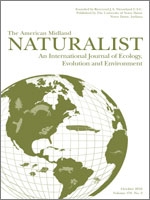The Illinois River historically provided high-quality habitat for a variety of migratory birds but sedimentation, management for commercial navigation, and increasing hydrologic variability have contributed to reductions in aquatic vegetation and naturally occurring foods for waterfowl. Cover of aquatic vegetation within the Illinois River Valley (IRV) declined during the 1950s, and it has not recovered in its historical range. The Dresden and Starved Rock reaches of the Illinois River, unlike other reaches in the IRV, still retain aquatic macrophytes in the main channel and connected backwater wetlands. To determine energetic carrying capacity of seeds and tubers for waterfowl in the upper Illinois River, we collected benthic core samples from random locations throughout the Dresden and Starved Rock reaches in falls 2013–2014. All sampling locations (i.e., main channel and connected backwater wetlands) had low mean density of seeds and tubers (<175 kg/ha) and duck energy days (DED; <1200 DED/ha) relative to other managed wetlands and backwater wetlands in the region. Greatest seed density occurred in the Dresden reach in 2014 (109.0 ± 85.7 kg/ha; n = 30) and 2013 (44.4 ± 10.7 kg/ha; n = 28), followed by the Starved Rock reach in 2014 (13.7 ± 35.7 kg/ha; n = 30). Within the Dresden reach, seed and tuber densities in the Des Plaines River were similar (95.8 ± 64.2 kg/ha; n = 40) to those in the Kankakee River (37.7 ± 14.0; n = 18), despite commercial barge traffic and channel maintenance in the former. However, seed and tuber densities from throughout the upper Illinois River were likely near or below levels required for ducks to forage profitably and value as foraging habitat for dabbling ducks seeking seeds and tubers may be limited. Conservation planners should prioritize restoration and enhancement of disconnected waterfowl management areas with water management capabilities to maximize growth of aquatic vegetation for quality waterfowl habitat in the Illinois River and other Midwestern river systems.
How to translate text using browser tools
1 October 2016
Energetic Carrying Capacity of Riverine and Connected Wetlands of the Upper Illinois River for Fall-Migrating Waterfowl
Jay A. Vonbank,
Heath M. Hagy
ACCESS THE FULL ARTICLE





